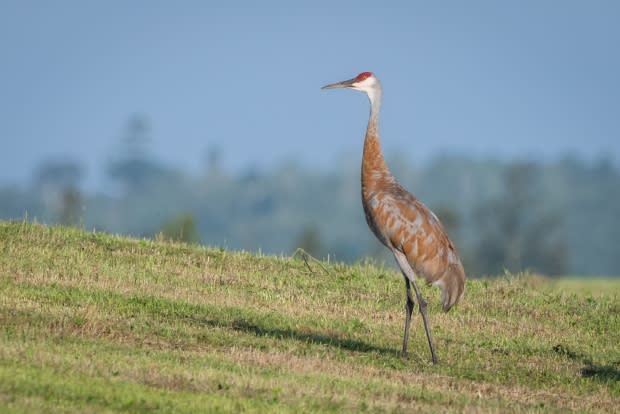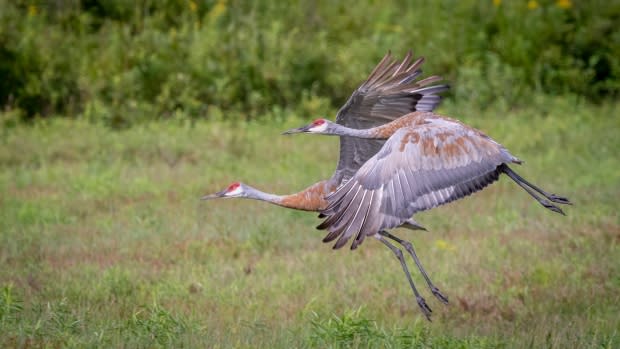Crane rare to Nova Scotia nesting in province
Looming at over a metre tall, a fairly rare bird to Nova Scotia has begun to nest in the province.
Sandhill cranes were almost unheard of in the area until about five years ago, said Nova Scotia Bird Society president David Currie.
Members of the society have spotted chicks in recent years, but haven't found nests yet.
"With changes in climate and changes in habitat and protections of some of the wetlands that we have here in the province, they're finding this to be suitable for them, and we are finding an increased number of them due to those factors here, I expect," said Currie.
The birds have been enjoying the isolated marshes and agricultural fields of Stewiacke and Cumberland County near Amherst, he said.
This summer, a pair of sandhill cranes settled around the Stewiacke area, drawing the attention of birders.
Their grey and rusty brown plumage makes them difficult to find, he said.
Jason Dain heard the rattling bugle-like calls of the pair before he saw them.
He spotted them in a field, but photographed them from his car so he wouldn't disturb them.
"This time of year they're quite nice with the red on their backs," said Dain.

"The two of them started running like ostriches," said Dain. "They put their necks down and they kinda start running and flapping their wings and off they go. They're like pre-historic chickens. They're hilarious."
This wasn't Dain's first encounter with a sandhill crane.
In the winter of 2017, he found one on a snowy beach in Three Fathom Harbour along the Eastern shore.
"If you see them in the winter, they're just grey. The sort of rusty red colour that's on their back is from soil that they actually pick up and rub in their feathers. The iron in the soil turns their feathers red."

Currie said the Stewiacke pair may have landed in the area after hearing calls from a captive pair living in the Shubenacadie Wildlife Park.
He said he expects they'll become more common in the area now that they've started to nest here.
MORE TOP STORIES


